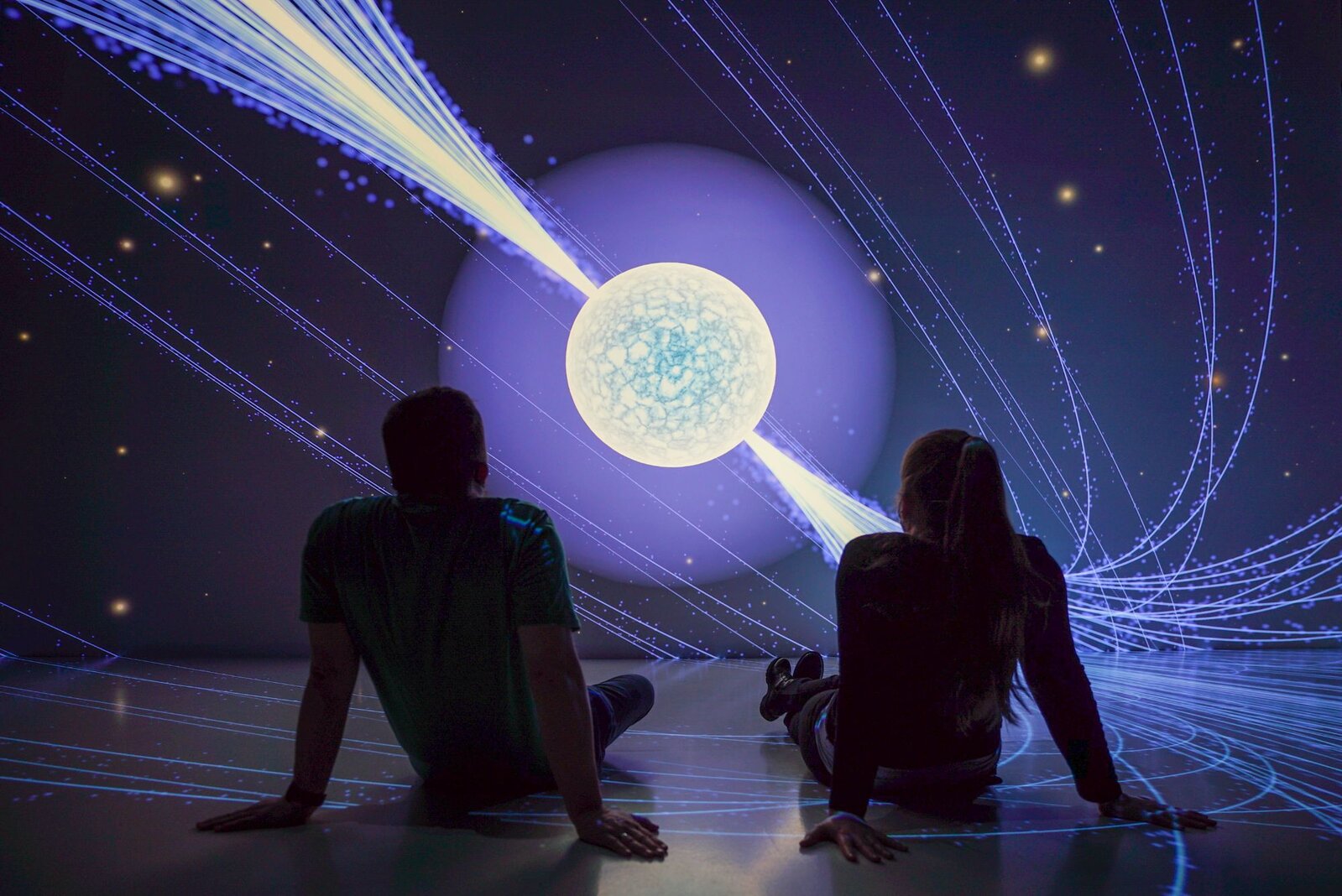Interview with Michael Mondria, Director of Ars Electronica Solutions, Linz
In CODE Studio, with Deep Space, special worlds open up to us. In 3D, you can admire insects up close at hundreds of times magnification, fly into space without a spaceship, or discover architectural and art-historical masterpieces. This educational, cultural and entertaining content has been brought to CODE in collaboration with the Ars Electronica Center in Linz. How widely can digital tools be used and how can special moments be created in a digital experience centre? These are some of the topics we discussed with Michael Mondria, Director of Ars Electronica Solutions.

Why do you think using digital tools is an important thing in these days?
Having this experience of ours electronically in the last decades, we see a lot of changes happening in these times. And I think it's really important to use the digital technology available now and develop further on that. It could improve such a lot of things in terms of education and in terms of really understanding our world now, which becomes more and more complex. So I think using digital technologies is, really, especially in the field of education, well, it's really necessary to think about how to use it on a much larger scale.
You have this technology called Deep Space, which we have in CODE. Why do you consider Deep Space to be special?
It's very special because it's not just a digital technology that gives you a really broad portfolio available to show to the kids or to the audience. It's special in a lot of different aspects. On the one hand, it's totally open: it’s an open platform. In terms of the content, you can easily, so to say, adapt the content that is to be shown in Deep Space in different ways and in different fields. The way the audience receives this content is very special. It's not like looking at something passively. It's an interactive environment, interactive in both senses of the word. On the one hand interactive for the for the, say, trainer, the facilitator that gives an overview about the content so you can interact with the application and can react to the audience. Depending on who is in the audience, you can, say, adapt the content and the interaction with the content to the audience. On the other hand, there is the interaction of the audience itself, so they can interact with this content. This produces a very special moment. And I see this, and I’m always prompted to say that it becomes a space where the people are there together in the content and together they can see and watch and feel the emotions of the others and the other humans that see this content at the same time. This makes things very special because you then are not alone in the world of, say, new things that are shown to you, but you’re together with the others.
Do you have a favourite content?
Yeah, loads. But really a content that is very special is about our universe. And what I see with this content, it's really like if you are inside of this, you know, understanding that we humans on Earth are just such a tiny bit and we are in such an exciting, say, environment which we do not know, nothing about it. So I see people managers, businessmen inside this content. Then you see emotionally, you know, you understand who you are as a human. So I would say this is one of my favourites.
Can you tell us about Ars Electronica little bit? About your artists, for example.
Ars Electronica is quite an old cultural organisation. It was founded in 1979, so quite a long time ago, and with strong ties to the city. This is very important to know, and we have had 3 key terms from this time on in 1979. The one thing is technology. So we research technology; not just digital technology, but mainly digital technology in the context of humans. The second term comes in society: we always look at technology. What does this mean for us humans, for our societies, and what can we do as humans? What can a society do to influence the way how technology is used for us humans from a certain perspective, And this is the third notion: art. So art, technology, society, this is so to say, the core word for all our activities. But coming from this, our real core goal is to be a platform for artists. And this is reflected in a lot of very well known activities. So we have held the ASA Electronica Festival each year since 1979, which is now, one of the biggest media festivals in the world, having 1600 artists at any singel time at the festival, and having more than 4050 universities at the festival. And we have the Prix Ars Electronica; it's a competition for digital art, the biggest one in the world nowadays where we have a lot of categories inviting artists and creative people to and organisations of course to submit their projects and winning the golden Nica. There’s really a lot of big names in the world that have won since 1987. These are the core elements.
Do you have Hungarian artists?
Of course, Hungarian artists are part of this platform and not just for the festival. We have a lot of open calls where we invite creatives from around the world to participate. And so especially as well in the deep space environment, because we use the deep space environment as a platform as outside electronica is a platform. Deep Space is a platform anyway and there's a lot of Hungarian artists that are part of that and there are cool artworks coming out of that. It’s a very good community.